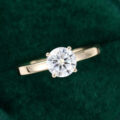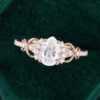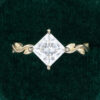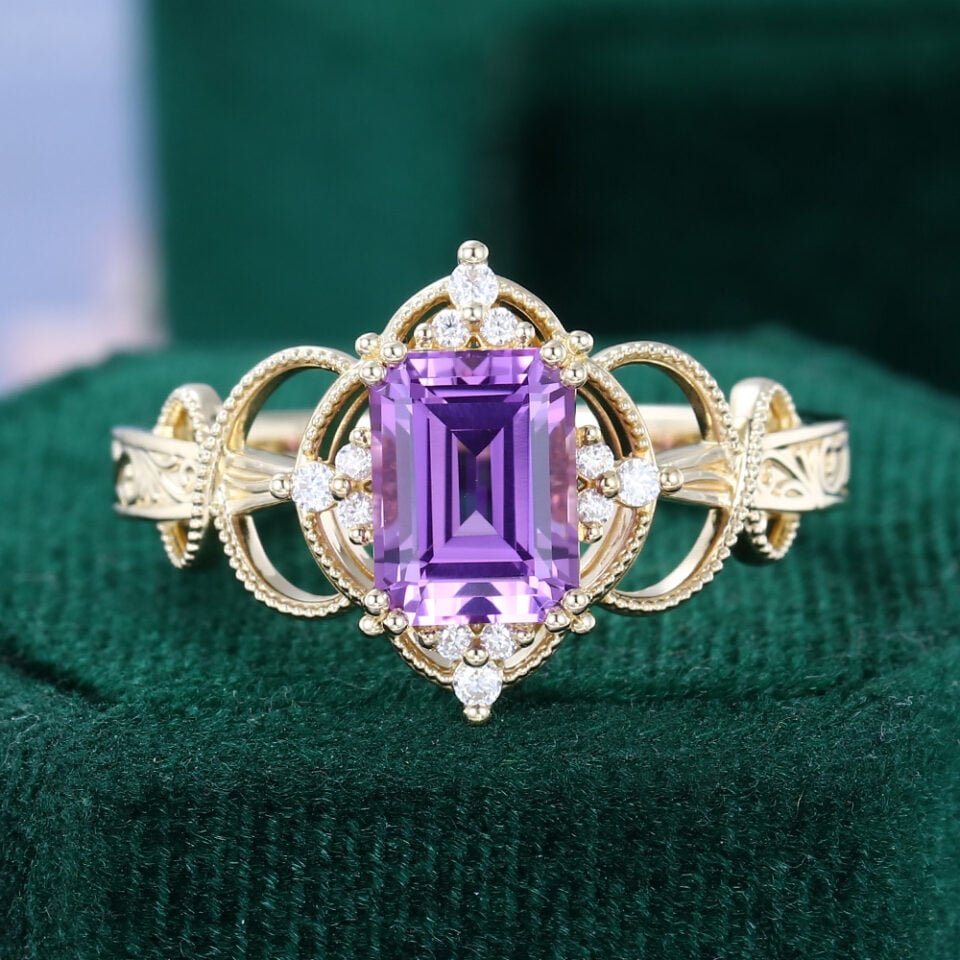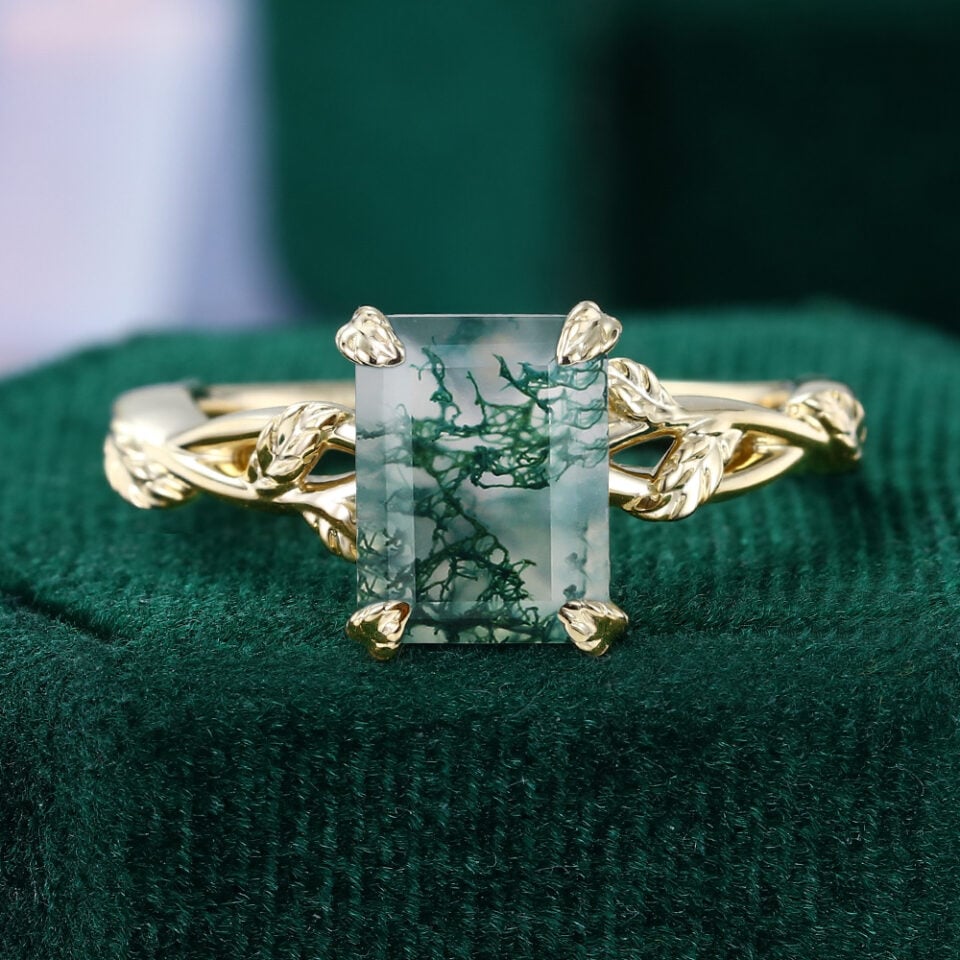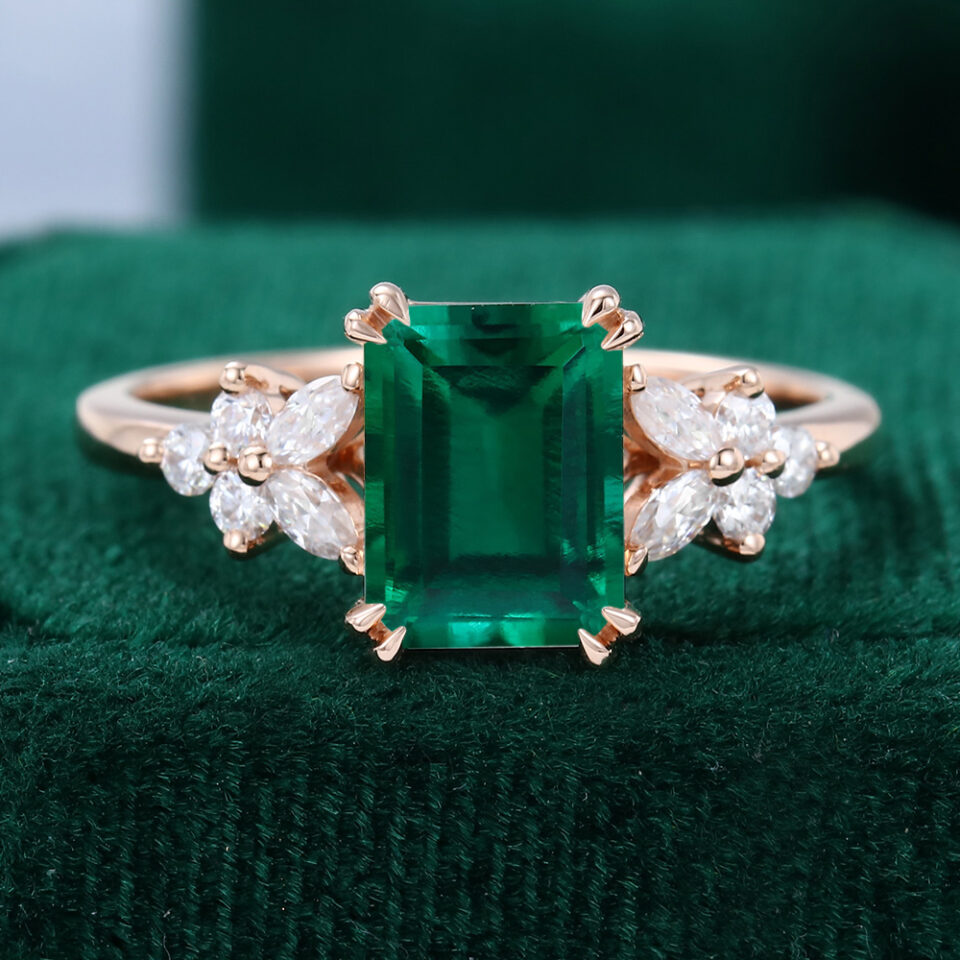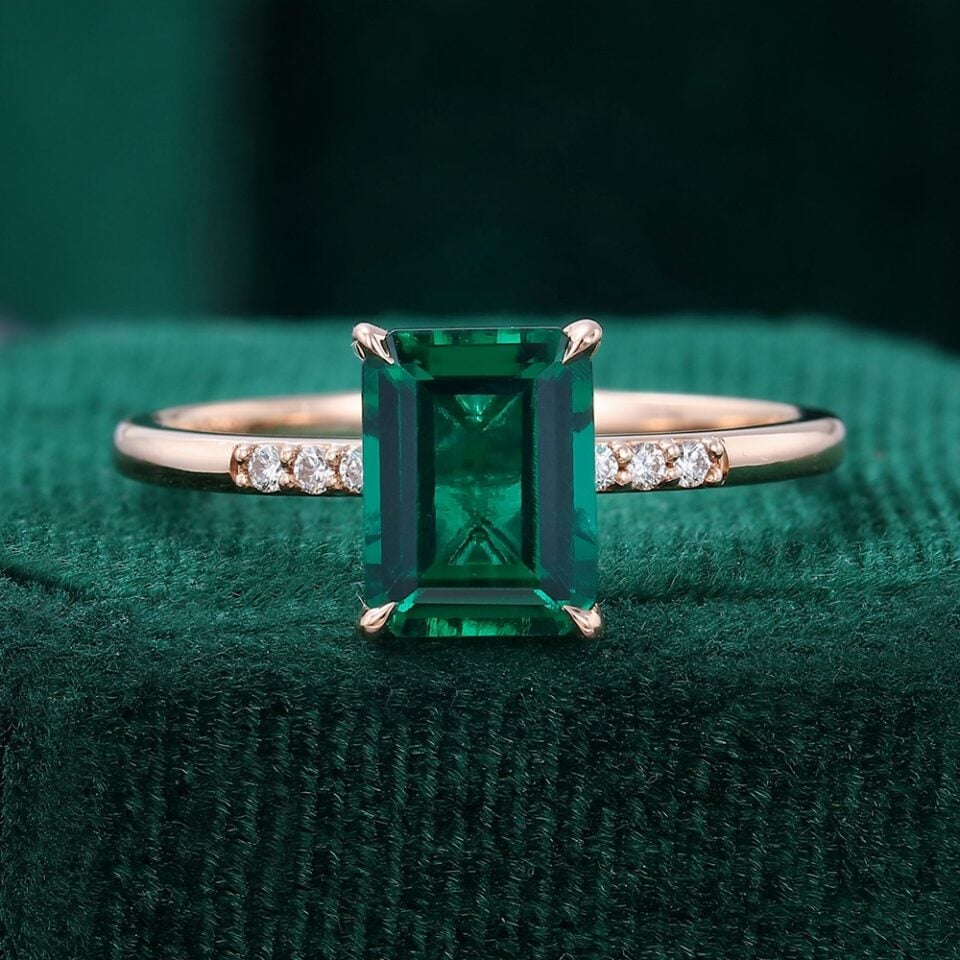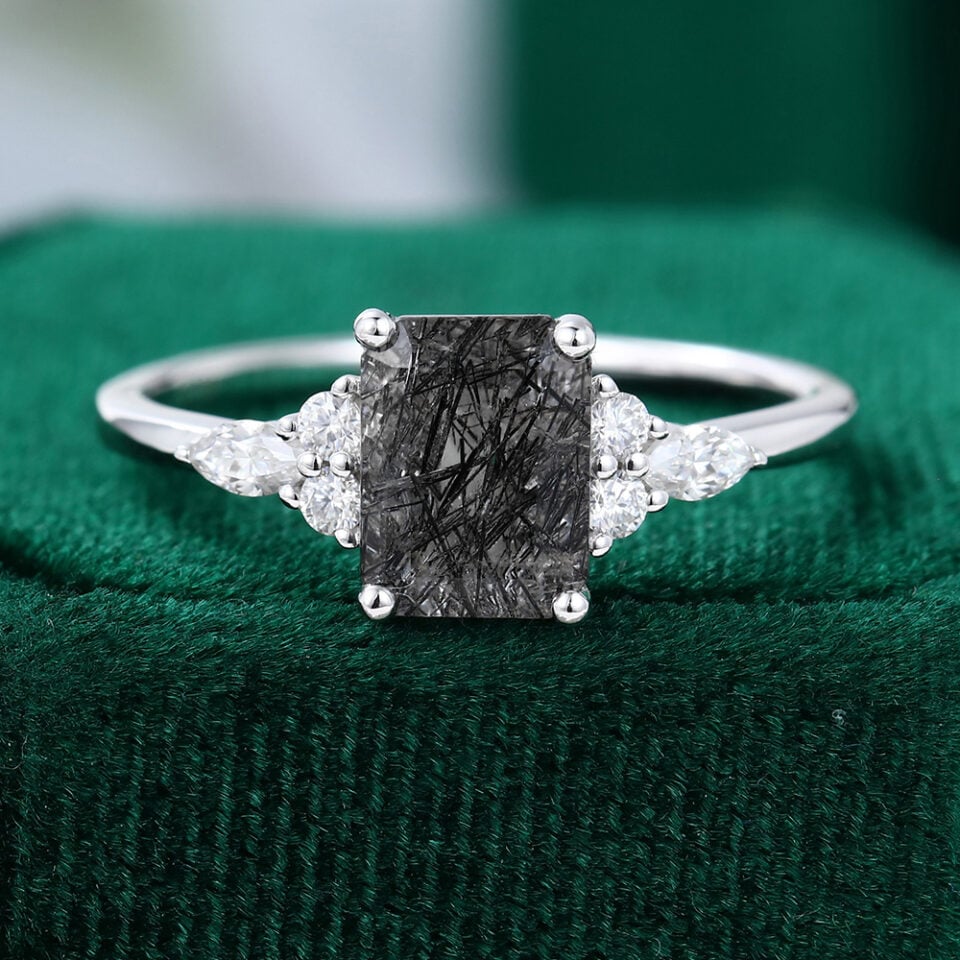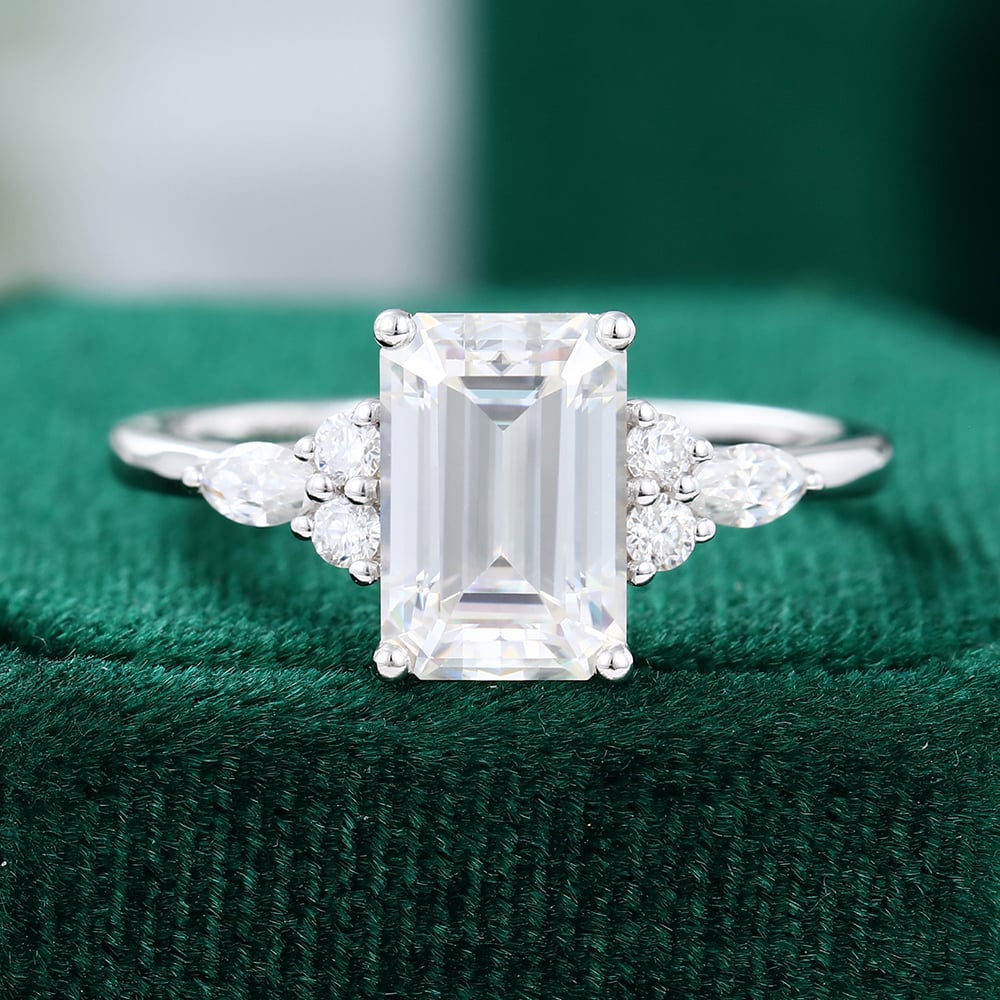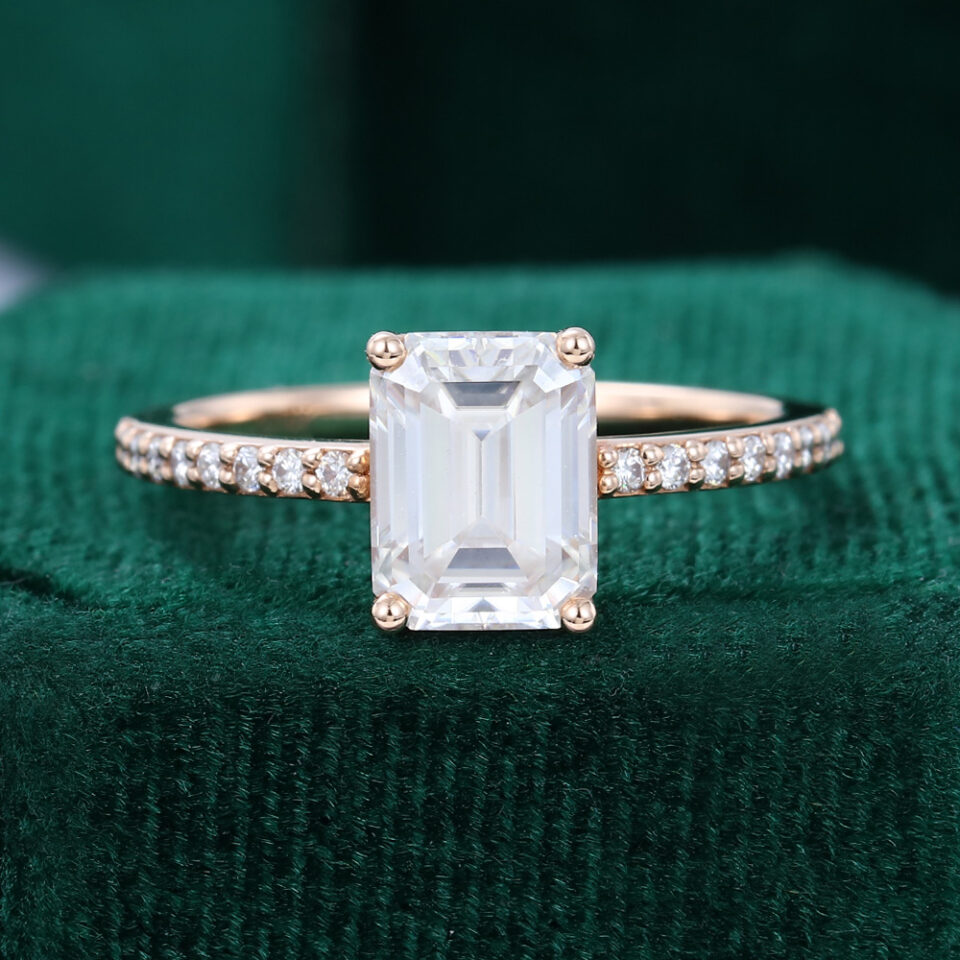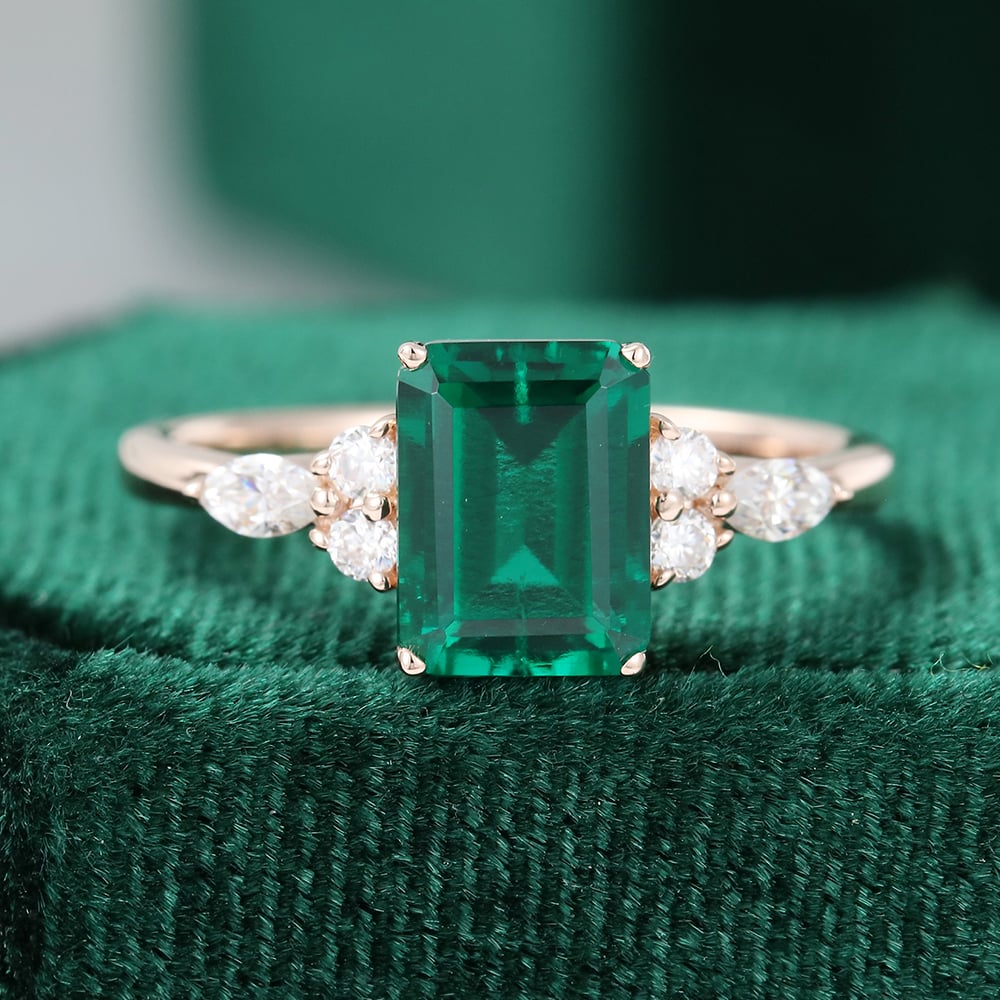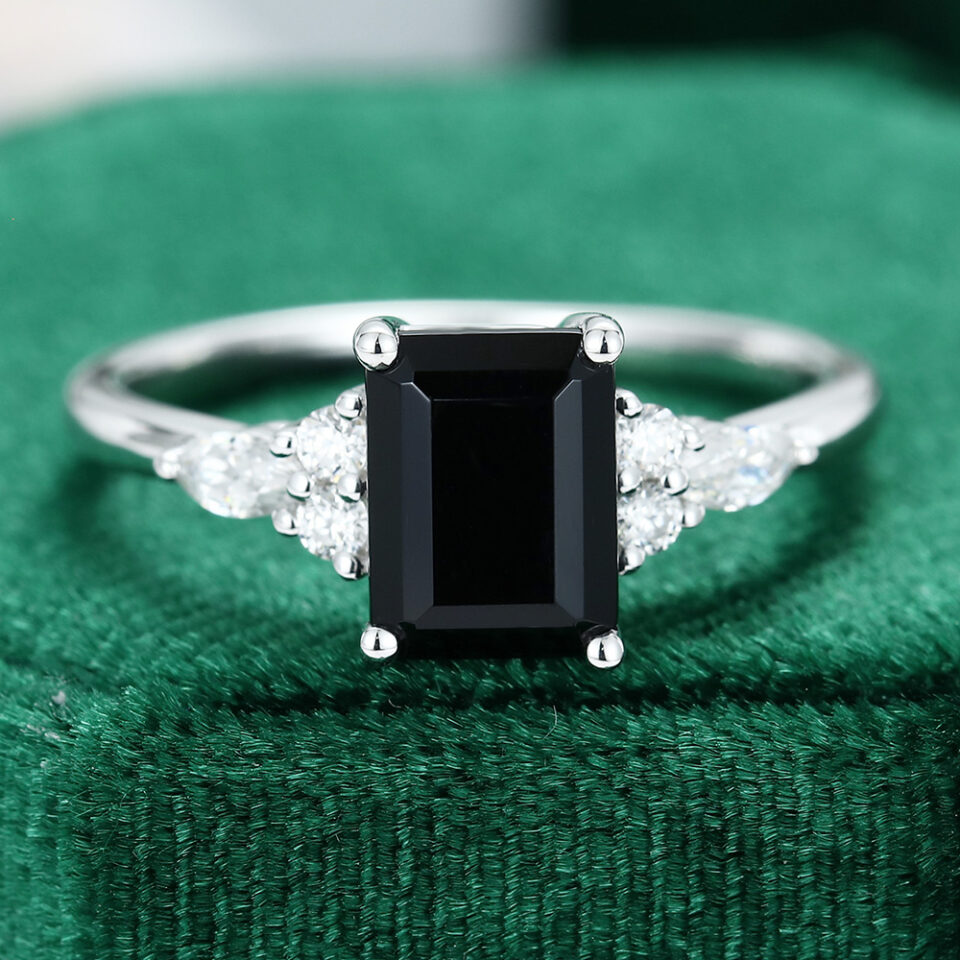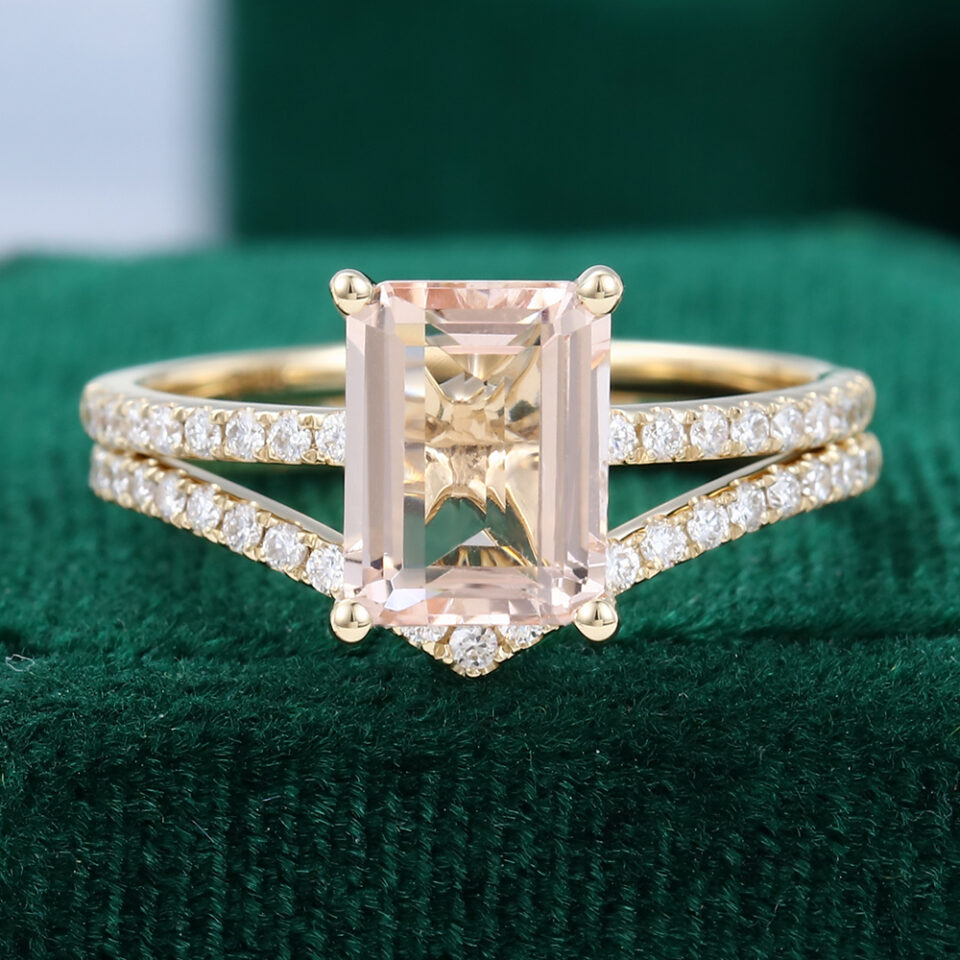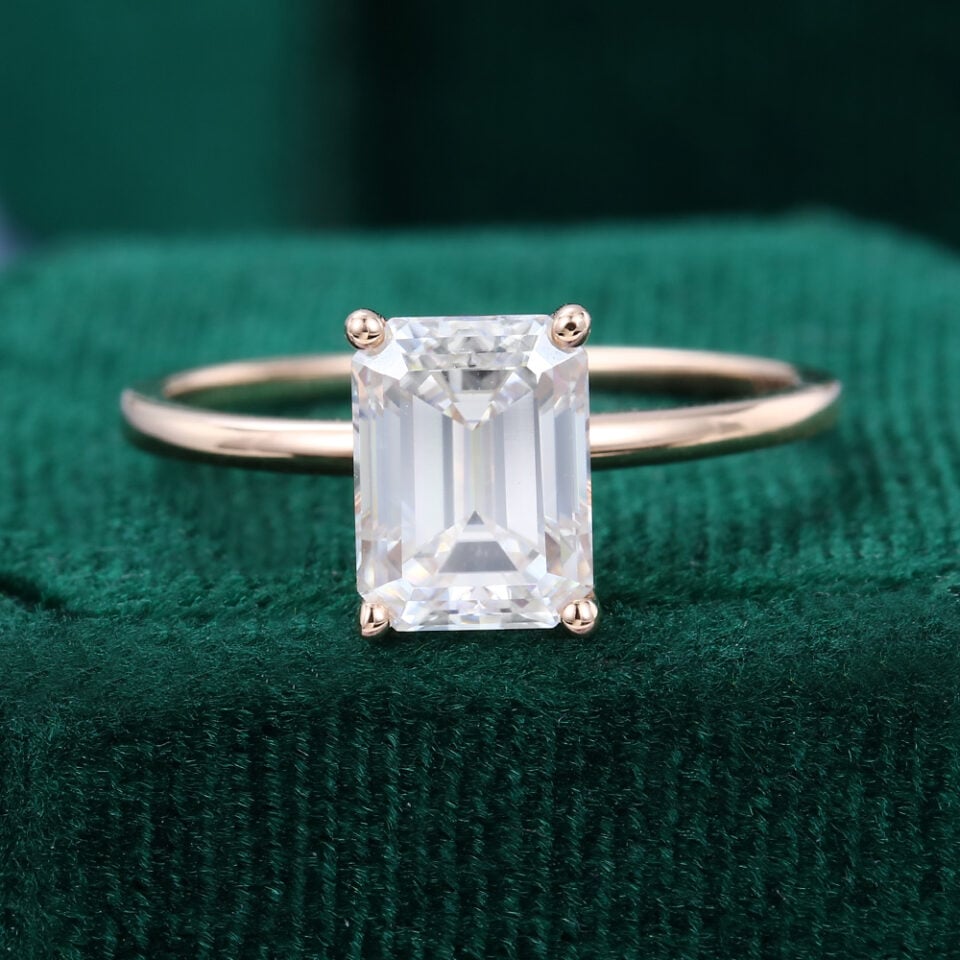Emerald Cut Engagement Rings
Showing 1–20 of 67 results
Choose refined elegance over simple sparkle. Emerald cut engagement rings are defined by classic beauty and sharp clean lines, perfect for showcasing a diamond’s clarity. These iconic engagement rings offer a sophisticated modern twist on a vintage appeal.
The emerald cut is unique among diamond cuts. Its rectangular shape and distinct step cut facets create a mesmerizing light performance unlike the brilliance of round brilliant diamonds or the radiant cut.
Hall of Mirrors: Parallel facets and an open table create the famous “Hall of Mirrors” effect—a subtle, architectural glow.
Clarity Focus: This cut acts as a clear window, demanding a high degree of clarity in the emerald cut diamond to ensure internal purity is showcased by the unfettered light. Because of this, the emerald cut engagement needs higher quality than other diamond shapes.
Style, Setting, and Value
Whether you select a timeless solitaire or dramatic side stone settings, the emerald cut engagement ring offers flexibility in ring setting and pairing:
The large surface area makes the diamond appear larger than other cuts of the same carat weight, providing excellent visual value.
Metal options, from warm yellow gold to sleek platinum, complement the stone’s sophisticated shape.
The straight edges ensure a perfect fit with any wedding band, making an effortless wedding bands pair. Our expert stone settings guarantee the security of every stone.
Need help finding or customizing the perfect emerald cut engagement ring that tells your story? Contact us, and we’ll craft it with care just for you.
You May Want to Know…




